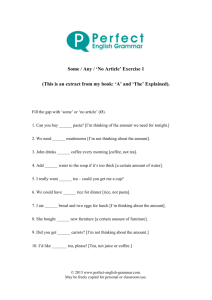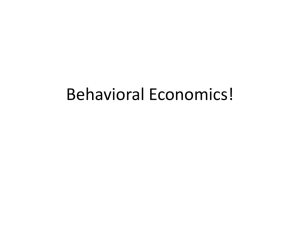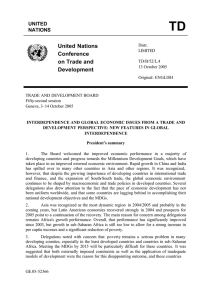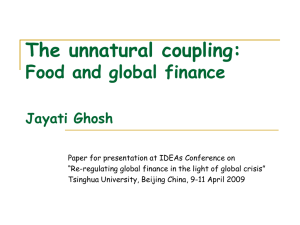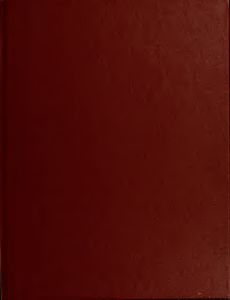Theories of International Trade
advertisement
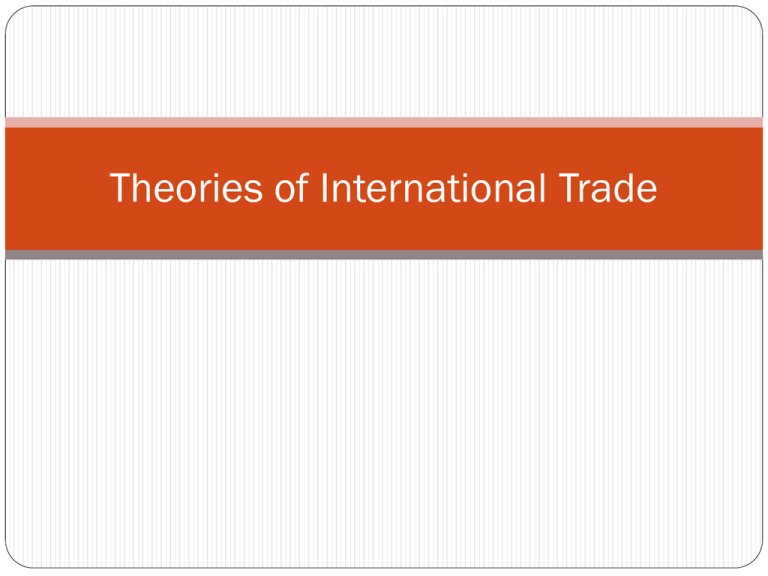
Theories of International Trade Theories of International Trade Exchange of goods across the national borders Fundamental principals for international trade and shifting trade patterns Why do nation trade with each other? Is trading is zero sum game or a mutually beneficial activity? Why do trade pattern among countries exhibit wide variations? Can government policies influences trade pattern? Theory of Mercantilism Wealth of nation measured by size of its accumulated treasure measured in terms of Gold Encouraging exports and discouraging imports : trade surplus Use of trade surplus to build powerful army and infrastructure Exploitation of resources by colonial power Active government intervention Win-loose game, zero sum game Not beneficial in the long run Theory of Absolute Advantage Adam Smith The standard of living of a country can be improved either by importing goods not produced by it or by producing large quantities of goods through specialization and exporting the surplus Absolute advantage refers to the ability of a country to produce goods more efficiently and cost-effective than any other country UK India Natural Advantages Tea 10 5 4 10 Acquired advantages Rice Total Resource Available : 100 Units with each country Resource Allocation: 50:50 for each product Gains from Trade Without Trade With Trade UK India Total UK India Total Tea 5 10 15 0 20 20 Rice 12.5 5 17.5 25 0 25 32.5 45 Theory of Comparative Advantage David Ricardo Country benefit from international trade even if it is less efficient that other nations in the production of two commodities. Country should specialize in the production and export of commodity in which absolute disadvantage is less than that of another commodity UK India Tea 10 5 Rice 5 4 Total Resource Available : 100 Units with each country Resource Allocation: 50:50 for each product Comparative Cost Advantage produ ct WithoutTrade With Trade (Increasing the Rise production) With Trade (Increasing the Tea production) UK India Total UK India Total UK India Total Tea 5 10 15 0 15 15 0 18 18 Rice 10 12.5 22.5 20 6.25 26.5 20 2.5 22.5 37.5 20 41.25 40.5 Factor Endowment Theory Hecksher Ohlin Reasons for difference in commodity prices and comparative advantage between nations Nation will export the commodity whose production require intensive use of nation’s relatively abundance and cheap factor and import the commodity whose production require intensive use of nation’s scarce resource Leontief Paradox Country Similarity Theory Staffan B Linder Trade pattern for primary product and manufacturing products In the case of manufacturing products trade pattern based on demand across countries rather than production cost of factor endowment Majority of trade occurs between countries having similar characteristics The New Trade Theory Concept of economies of scale to solve Leontief Paradox Internal economies of scale External economies of scale International Product Life Cycle Theory Introduction Growth Maturity Decline




